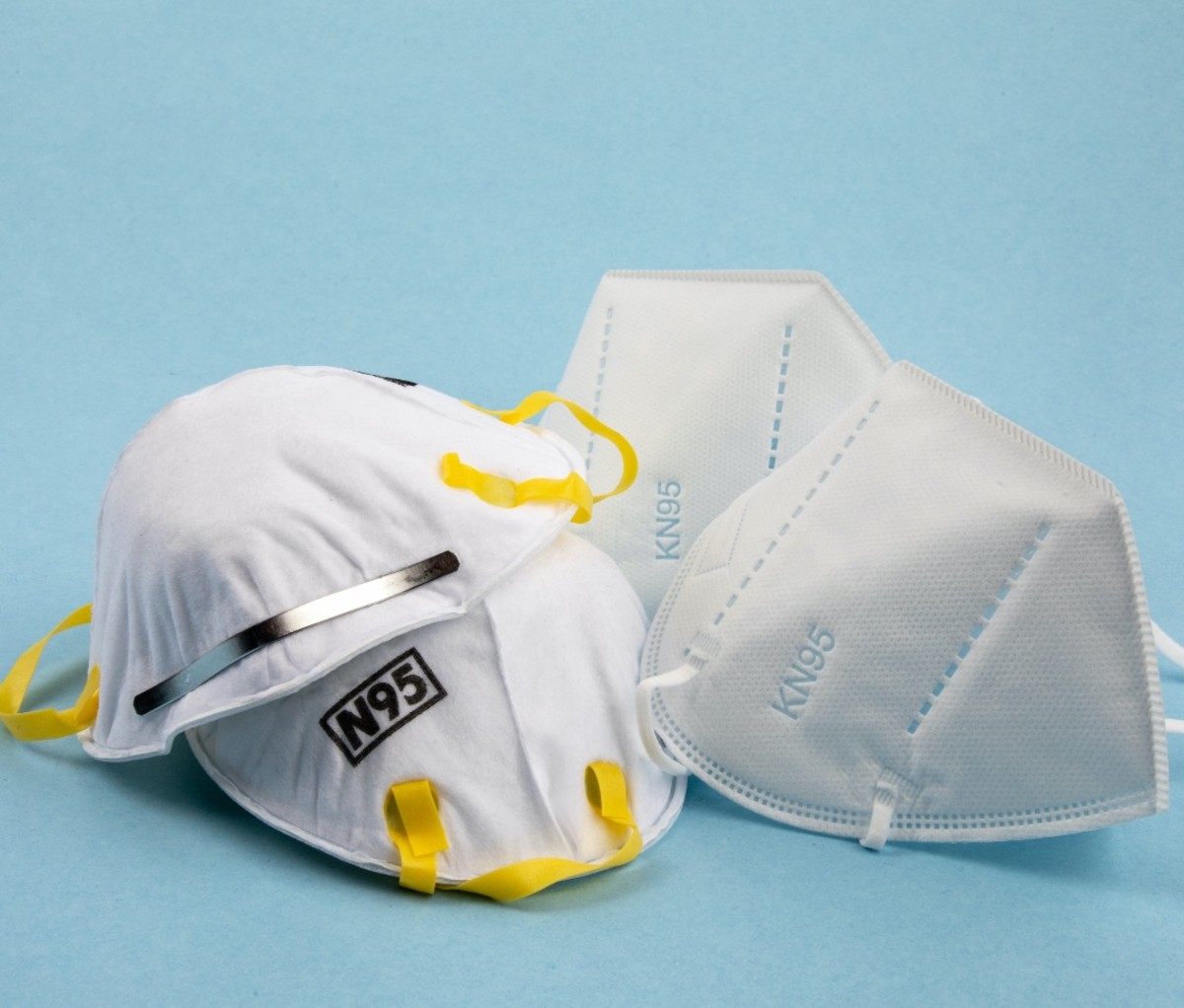To mitigate the spread of COVID-19, we wear face masks to protect those around us from being exposed to our potentially infected respiratory droplets. But if you’ve been rocking a neck gaiter or bandana for style or ease, you’re actually not offering much protection at all, according to new research.
Scientists at Duke compared 14 different types of face coverings—including 2- and 3-ply fabric and surgical masks, various N95s, a neck gaiter, and a traditional bandana. They measured how many droplets came through the fabric when the wearer spoke.
Their findings, published in Science Advances: While some masks work quite well, bandanas offer almost no protection against the transmission of respiratory droplets. And the neck gaiter they tested actually let through more droplets compared to not wearing a mask at all.
Study on efficacy of 14 different face masks against COVID-19 Josh Erikson
Why Gaiters and Bandanas Don’t Work Well
The Duke team didn’t study why exactly some masks worked better than others. But the type of fabric and how tightly the mask fits to your face are both key components in how effective a face covering will be, says lead study author Martin Fischer, Ph.D., associate research professor of chemistry at Duke.
Bandanas leave a huge gap under your mouth for particles to travel out of as you speak or breathe.
And the material and weave of a neck gaiter—at least the one Fischer’s team used, which was a single layer of polyester/spandex—disperses larger droplets into several smaller ones, which actually increases the droplet count overall.
In addition to creating more droplets for someone to breathe in, smaller droplets stay suspended in the air for longer than big ones, thanks to gravity. That adds even more exposure risk to those around you if you’re covering your mouth with a gaiter as you pass someone on a narrow trail or in a crowded subway car.
 N95 face masks sockagphoto / Shutterstock
N95 face masks sockagphoto / Shutterstock
So Which Face Masks Actually Worked?
As far as the most effective masks, Fischer’s team found a fitted N95 to be best, most likely because it has both a tight seal and thick material.
However, the valved version of an N95 mask performed very poorly. That’s not surprising considering the Centers for Disease Control and Prevention warned last week that masks with exhalation valves or vents (i.e., the face coverings you might have from construction work) do not prevent the wearer from transmitting COVID-19 to others. After all, you’re just letting all your air directly out into the world.
Second best overall was a 3-layer surgical mask, followed by a 3-layer cotton/poly blend (like the kind a family member might have sewn for you). The main takeaway here is the more layers the better—three helped significantly lower the number of respiratory droplets that were able to travel through, compared to 2-ply or single ply fabric masks.
The Bottom Line
Fitted N95 masks work best—but these should be reserved for healthcare workers, Fischer points out. Cotton masks, meanwhile, block about 80 percent of the droplets, which is “perfectly fine” for everyday use, he adds. Opt for a three-layered variety if you can. (TBD on if ties are better than elastic, Fischer says.)
Perhaps surprisingly, if a gaiter is the only face covering available, you should still use it. Fischer is quick to point out they only studied one type. Other brands and materials might perform better. But at the very least, fold your gaiter in half or three times so you have more than one layer in front of your mouth to up the protection ability, he suggests.
Overall, the tighter a mask fits to your face and the more layers of fabric between your mouth and the outside world, the better protection it will offer. (A good rule of thumb: If you can see light through the fabric, it isn’t going to offer much protection, Fischer says.)
Yes, those are two things that also make a mask harder to breathe out of when you’re working out or wearing it all day. But until we understand more about who is a carrier of COVID-19, the goal of wearing a mask should be to protect others from your own respiratory droplets. And any mask is better than no mask.
 Buff Filter Mask and Asics Unisex Runners Face Cover Courtesy Images
Buff Filter Mask and Asics Unisex Runners Face Cover Courtesy Images
Our Picks (Not Based on the Study)
If you’re a hardcore fitness fanatic who sweats regularly, try to time your outdoor workouts to off-peak hours in less-congested areas (i.e. avoid parks). If you’re training in extremely hot and humid conditions, try the new Buff Filter Mask ($30). It comes with five replacement filters that block 98 percent of airborne particulates (they should be replaced after 24 hours), and the adjustable back-of-head elastic bands ensure a snug fit. Or, opt for Asics’ Runners Face Cover ($40). It mitigates the spread of droplets by covering your nasal passage without inhibiting breathability within the mask. Specifically placed air holes let air in but keep your saliva from escaping out. These aren’t as foolproof as an N95, but again, those should be reserved for healthcare workers. By being more strategic about where and when you train, on top of wearing one of these masks, you’ll ultimately lower your risk of getting and spreading COVID-19.
For access to exclusive gear videos, celebrity interviews, and more, subscribe on YouTube!
source https://betterweightloss.info/the-best-and-worst-masks-to-protect-against-covid-19-new-study/


No comments:
Post a Comment